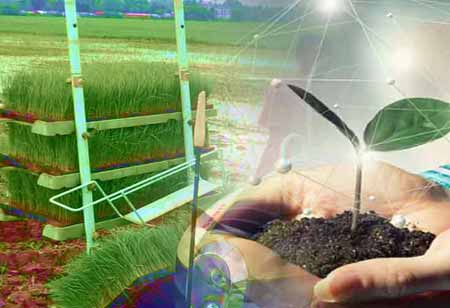Thank you for Subscribing to Agri Business Review Weekly Brief
What Role Does Vertical Farming Play In Our Future Food System?
Vertical farming is the agricultural process of growing crops on top of each other rather than in traditional horizontal rows. As a result, vertical farming conserves space, resulting in a higher crop yield per square foot of land.

By
Agri Business Review | Thursday, April 28, 2022
Stay ahead of the industry with exclusive feature stories on the top companies, expert insights and the latest news delivered straight to your inbox. Subscribe today.
Vertical farms are mostly found indoors, such as in a warehouse, where they can control the environmental conditions for plants to thrive.
FREMONT, CA: Vertical farming is the agricultural process of growing crops on top of each other rather than in traditional horizontal rows. As a result, vertical farming conserves space, resulting in a higher crop yield per square foot of land.
This next frontier of farming offers significant benefits, including the ability for farmers to produce more output while using fewer resources and reducing transportation costs by locating operations closer to the point of consumption.
Irresponsible Water Use: Water covers roughly 70 percent of the world, but only 2.5 percent is fresh. Only a percent of freshwater is easily accessible, although agriculture consumes 70 percent of it globally. That's a lot of liquid!
In Vertical farming, crops can be grown hydroponically in a protected, indoor environment, allowing farmers to provide crops with a precise amount of purified, nutrient-rich water. In addition, the irrigation system continuously recirculates water, resulting in significant water savings compared to field-grown crops.
Loss of Arable Land: Over the last 40 years, we've lost 30 percent of the world's arable land due to harmful practices like urban encroachment and pollution, which cause topsoil erosion and poor soil health.
Vertical farming transforms industrial spaces outside of cities into smart indoor farms that use every square foot all year. The efficient design stacks crop vertically, allowing farms to be 100x more productive than field-grown operations while using the same amount of land.
Pesticide Use: The United States uses more than one billion pounds of pesticides each year, impacting ecosystems and soil health. Pesticide residues are found in an estimated 70 percent of U.S. produce.
Vertical Farms cultivates pesticide-free produce in a controlled, secure environment.
A Fragmented Food System: Indoor, vertically integrated farms can be found outside cities and can grow 365 days a year. This means that the farms provide a reliable, fresh, and consistent food supply to the surrounding communities.
While indoor vertical farming offers unique advantages to the challenges of feeding a growing planet, the output of these farms alone would not be sufficient to feed the entire population. Therefore, traditional and indoor growers must collaborate to build a more resilient and sustainable food system.
See Also : Food Processing Solutions Companies





